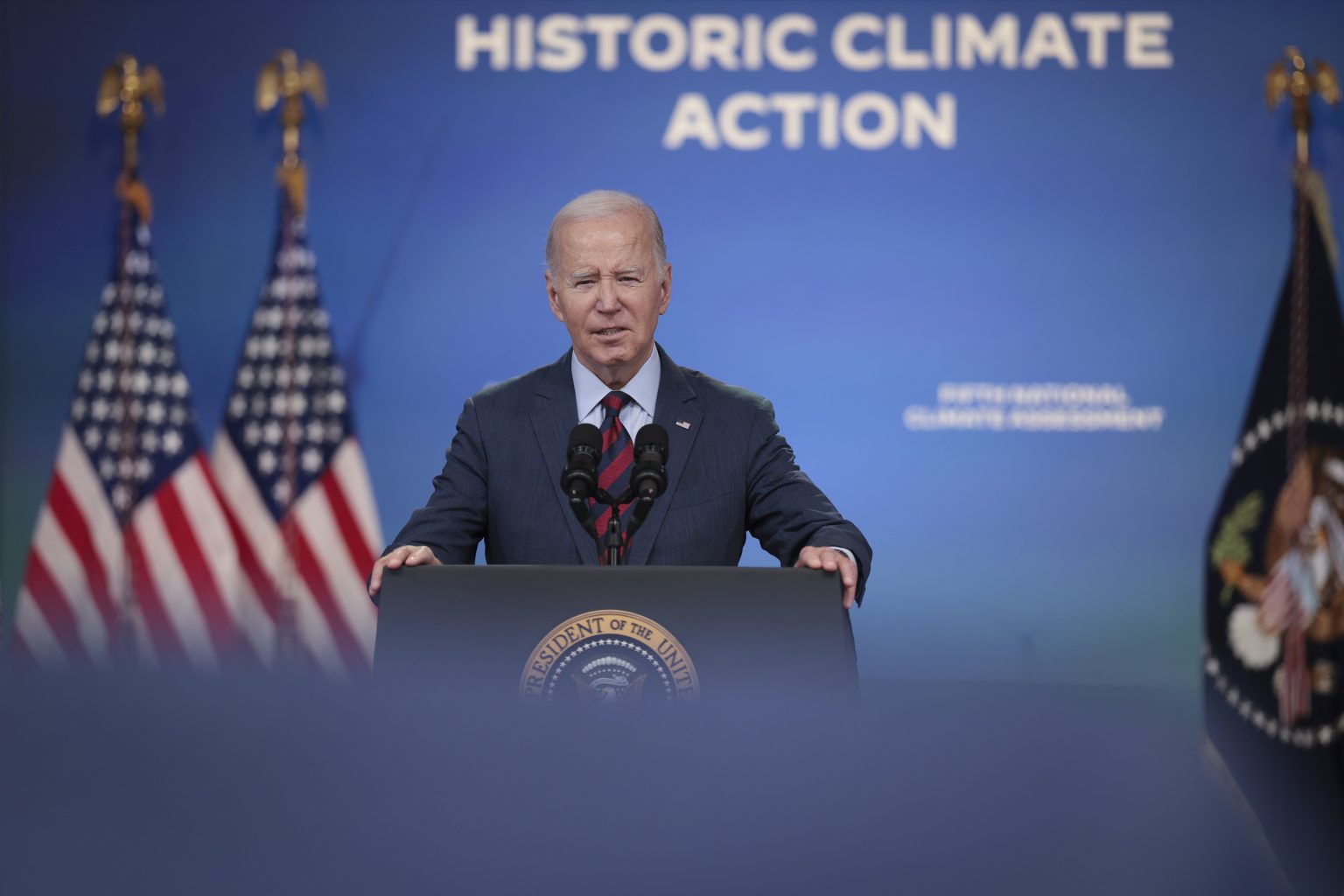President Biden’s final weeks in office have been marked by a concerted push for climate action, solidifying his administration’s legacy on environmental policy. This “home-stretch sprint” involves finalizing substantial clean energy loans, supporting state-level initiatives on electric vehicles (EVs), and establishing a new national target for greenhouse gas reductions. A cornerstone of this effort is the ambitious goal to cut greenhouse gas emissions by more than 60% by 2035, a commitment aligned with the international Paris Agreement on climate change. This target underscores the administration’s dedication to a clean energy transition, despite the anticipated policy shifts under the incoming Trump administration. The focus is on fostering continued momentum in climate action through investments, innovation within American industries, and ongoing efforts by state, local, and tribal governments.
The administration’s climate strategy recognizes the potential reversal of its policies under the incoming presidency. However, the groundwork laid through investments, policy implementation, and fostering a growing clean energy economy aims to create a level of resilience against such changes. The administration emphasizes the importance of signaling continued commitment to climate action to both domestic stakeholders and the international community. This includes encouraging ongoing efforts at the state and local levels, reinforcing the message that climate action will persist in the United States despite potential federal backtracking. The administration’s efforts are designed to create a scenario where climate progress becomes deeply ingrained in the American economy, making it politically and economically challenging to reverse.
A key aspect of Biden’s final climate push involves bolstering the burgeoning EV market. This includes approving California’s request to enforce stricter emissions standards for vehicles, a move projected to accelerate the transition to EVs and significantly reduce greenhouse gas emissions from transportation. The Environmental Protection Agency (EPA)’s approval of California’s waivers under the Clean Air Act is a crucial step in supporting the state’s ambitious clean car program, which aims to phase out sales of new gas-powered cars by 2035. This action underscores the administration’s commitment to leveraging state-level initiatives to drive national progress on climate goals.
The administration’s focus on EVs extends beyond regulatory measures, encompassing substantial financial backing for the industry through loans and incentives. Recent approvals of multibillion-dollar loans for EV automakers and battery manufacturers through the Department of Energy demonstrate the commitment to building a robust domestic EV supply chain. These investments, facilitated largely by the Inflation Reduction Act (IRA), are aimed at stimulating job creation and driving technological innovation within the EV sector. The administration views these investments as a cornerstone of its strategy to establish a self-sustaining clean energy economy, less vulnerable to political shifts.
Underlying the administration’s final climate actions is a calculated effort to “Trump-proof” climate progress. By fostering substantial private sector investment in clean technologies and creating a strong economic foundation for the clean energy transition, the administration aims to make reversing course on climate action more difficult. The significant investments spurred by the IRA, totaling nearly $200 billion in the EV sector alone, represent a significant economic force that is expected to continue propelling the clean energy transition forward. This influx of capital and the resulting job creation within the industry are intended to create a powerful constituency for continued climate action, regardless of federal policy changes.
The administration’s strategy rests on the belief that the economic momentum generated by these investments and policy initiatives will create a degree of inertia that will be difficult to overcome. The burgeoning EV market, bolstered by significant public and private investments, coupled with the growing commitment of businesses to sustainability, is seen as a testament to this strategy. The hope is that this economic reality, combined with ongoing state and local level action, will ensure that the fight against climate change continues in the United States, even in the face of potential federal setbacks. The administration’s legacy on climate may ultimately depend on the resilience of this approach in the years to come.

